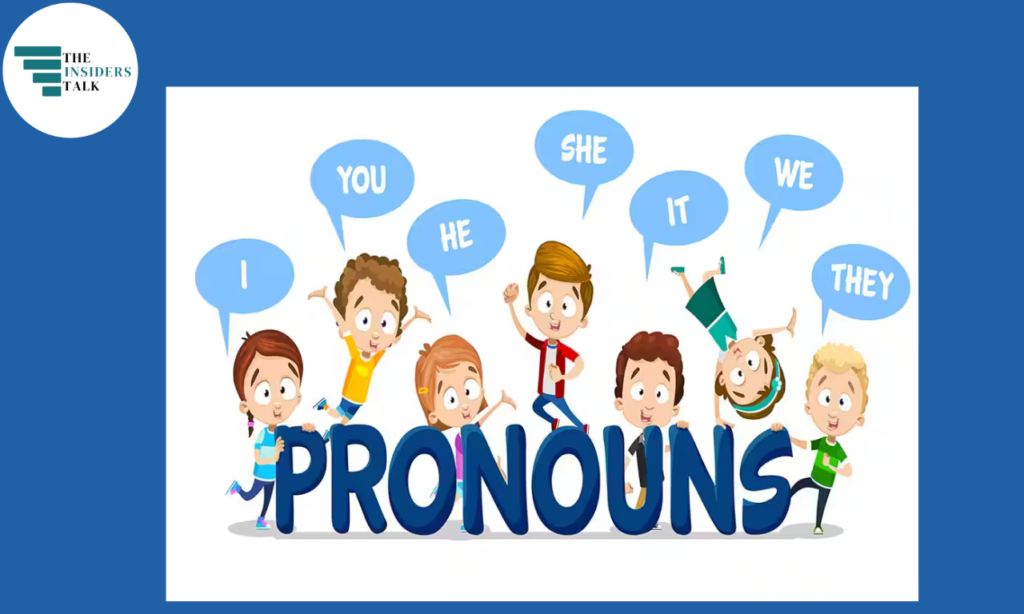Introduction to Pronouns
Pronouns are a fundamental part of any language. They are words that replace nouns in a sentence to avoid repetition and make communication clearer and more efficient. Imagine having to repeat someone’s name or a noun over and over in a conversation — it would get tedious, right? That’s where pronouns come to the rescue. Pronouns are essential not just for fluency, but they also make our sentences more dynamic and less repetitive. They help smooth out communication, making it simpler for speakers and listeners alike.
Types of Pronouns
There are several types of pronouns in English, each serving a unique function in the language. Let’s break them down:
1. Personal Pronouns
Personal pronouns are the most commonly used type of pronouns. They refer directly to people or things. These pronouns change form based on the role they play in a sentence, whether they are subjects, objects, or show possession.
- Subjective Case: Pronouns that act as the subject of a sentence. (e.g., I, he, she, they)
- Objective Case: Pronouns that act as the object of a verb or preposition. (e.g., me, him, her, them)
- Possessive Case: Pronouns that indicate ownership. (e.g., my, his, her, their)
2. Reflexive Pronouns
Reflexive pronouns are used when the subject and the object of a sentence are the same person or thing. These pronouns always end in “-self” or “-selves.”
Examples: myself, yourself, himself, herself, herself, ourselves, yourselves, themselves.
3. Demonstrative Pronouns
Demonstrative pronouns are used to point to specific things or people. They indicate whether the noun they refer to is singular or plural and whether it is near or far.
Examples: this, that, these, those.
4. Interrogative Pronouns
Interrogative pronouns are used to ask questions. They represent the unknown noun or entity the speaker is asking about.
Examples: who, whom, whose, which, what.
5. Relative Pronouns
Relative pronouns connect clauses or phrases to a noun or pronoun. They introduce relative clauses, which give more information about a noun.
Examples: who, whom, whose, which, that.
6. Indefinite Pronouns
Indefinite pronouns refer to non-specific people or things. These pronouns do not refer to any particular noun, and their meaning is often vague.
Examples: someone, anyone, everyone, no one, something, anything, everything.
7. Reciprocal Pronouns
Reciprocal pronouns express a mutual relationship or action between two or more subjects.
Examples: each other, one another.
Personal Pronouns Explained
Personal pronouns replace specific people or things, so you don’t have to keep repeating their names. For instance, instead of saying, “Sarah likes Sarah’s dog,” you’d say, “Sarah likes her dog.”
Examples:
- I went to the store.
- They enjoyed the movie.
- She gave him the book.
Reflexive Pronouns Explained
Reflexive pronouns refer back to the subject of the sentence. If you’re doing something to yourself, reflexive pronouns come into play.
Example:
- I taught myself how to play the guitar.
- They enjoyed themselves at the party.
Demonstrative Pronouns Explained
Demonstrative pronouns are handy when you want to point something out without naming it.
Examples:
- This is my favorite book.
- Those are the shoes I was talking about.
Interrogative Pronouns Explained
Interrogative pronouns are used when posing questions about people, places, or things.
Examples:
- Who called me last night?
- What is your favorite color?
Relative Pronouns Explained
Relative pronouns introduce additional information about a subject in a sentence. They connect relative clauses to main clauses.
Examples:
- The book that I read was amazing.
- She’s the person who helped me.
Indefinite Pronouns Explained
Indefinite pronouns refer to non-specific items or people. They are useful when you don’t need to be precise.
Examples:
- Someone left their bag here.
- Is everything ready for the meeting?
Reciprocal Pronouns Explained
Reciprocal pronouns show that two or more people are acting in a way that impacts one another.
Examples:
- The students helped each other with the project.
- They looked at one another and smiled.
Common Mistakes in Using Pronouns
Misusing pronouns can confuse your audience. Here are some common pitfalls:
- Misplacing Pronouns: Putting the pronoun too far from its antecedent can make sentences unclear.
- Gender-neutral Pronouns Misuse: Not everyone is familiar with using gender-neutral pronouns like “they” in a singular sense.
- Using Pronouns Without Clear Antecedents: Always ensure that it’s clear which noun your pronoun is replacing.
Gender-Neutral Pronouns
With growing awareness of gender identity, gender-neutral pronouns have become essential in ensuring respect and inclusivity in language. Common gender-neutral pronouns include “they/them” for singular use.
Example:
- Jamie said they would arrive at 6 pm.
Why Pronouns Matter in Communication
Pronouns are more than just words; they shape how we interact with each other. Whether in writing or conversation, respecting people’s pronouns fosters inclusion and makes communication clearer.
Learning and Practicing Pronouns
To master pronouns, practice using them in different sentence structures. Exercises, worksheets, and real-world conversation are all great tools to reinforce your understanding.
Conclusion
Pronouns are an integral part of the English language, essential for clarity and smooth communication. From personal to demonstrative and reflexive pronouns, each type serves a unique purpose. By understanding how pronouns function and the common mistakes to avoid, you can enhance your communication skills.
Pronoun FAQs
Q1. What is a pronoun?
Ans. A pronoun is a word used to replace a noun in a sentence, helping to avoid repetition.
Q2. How many types of pronouns are there in English?
Ans. There are seven major types of pronouns: personal, reflexive, demonstrative, interrogative, relative, indefinite, and reciprocal.
Q3. Why are pronouns important in writing?
Ans. Pronouns make writing clearer and less repetitive, improving the flow of sentences.
Q4. What are gender-neutral pronouns?
Ans. Gender



